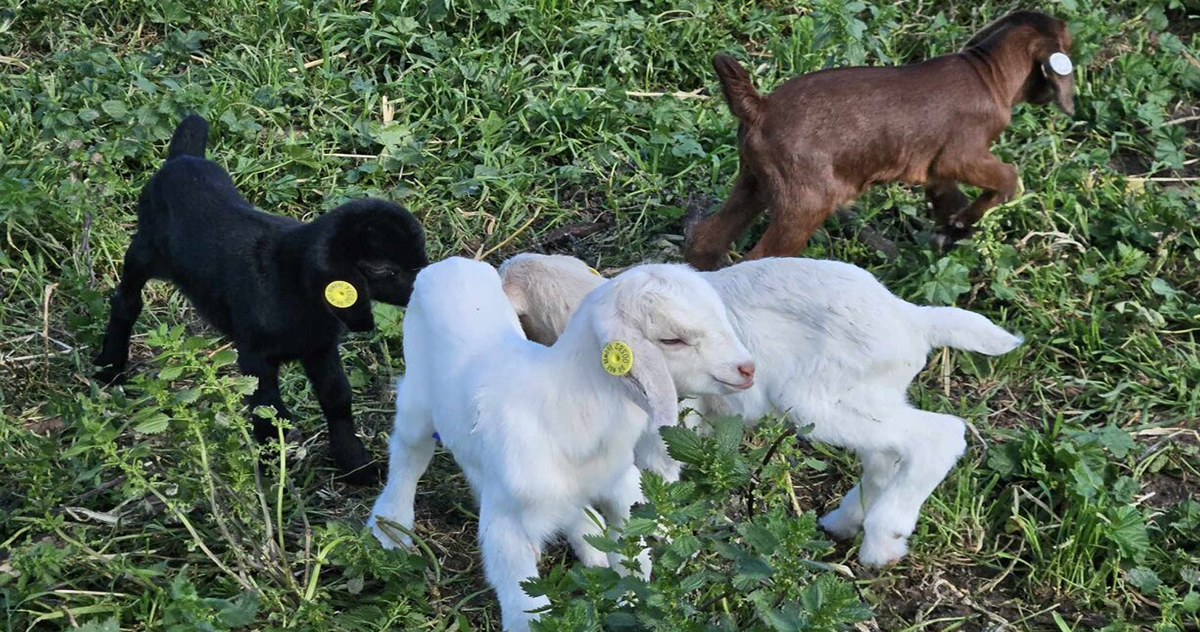Goat producer adapts eIDs to on-farm priorities

Key points:
|
John Falkenhagen and his wife Bec own Ideal View Goats, a goat meat and dairy enterprise located near Meningie, about 90-minutes south-east of Adelaide.
Until recently, his South Australian dairy was milking around 600 goats year-round, but in September this year, John closed the dairy side of the business to focus on meat production.
John was quick to see the many benefits of electronic tagging and was an enthusiastic early adopter of eID for his goats.
“Every production system is different. We all monitor different things, our bottom lines are affected by different things,” he said.
“But no matter what enterprise you've got, you can adapt eID to your priorities, whether that’s monitoring for weight gain or parentage, it just makes those jobs easier.”
Easy and efficient
John said his business has been using eID for their goats for around eight years and that he was initially won over by the time and labour-saving benefits of the system.
“Because we were a stud, we were tattooing all our stock. We’d have around 260 kids in a shed and it would take two people four days to finish tattooing them all. When we moved to eID, it took six hours,” John said.
“That’s a huge time saving and because the tagging is so straightforward, I don’t have to be there to supervise, I can just send staff out to do it.”
No mistakes
The accuracy of the eID system is another benefit, according to John.
“Humans all transpose numbers. If you're running 1,000 does through the yard a day, and you're reading new tags, at some point you're going to go 642 instead of 462,” he said. “That becomes a big deal if you’re bleeding for an export and one number is wrong, it can muck up your whole day basically.”
“If you’re using scanners, the electronic tags are 100% accurate.”

Data is king
John says the business uses Agriwebb to consolidate the data from the tags so it all links back to the one place.
“We're tagging our goats at birth and their whole life gets tracked through the tags. When we weigh them, when we wean them, when they get pain relief or antibiotics, when they’re castrated, or preg-tested,” he said.
“So, for example, if we're selling an animal, we can see instantly if it comes up red because it’s under a withholding period. Having that information all in one place, tied to one tag, just makes it so easy to manage each animal.”
Protecting our export markets
John’s business also deals with the export market, and he said the eID works well for biosecurity tracking and treatment tracking.
“Ninety-five percent of Australian goat meat is exported, so being able to rely on the accuracy of our traceability and biosecurity records through the tags is absolutely critical to maintaining that market access.”
John said traceability is going to be increasingly important in retaining current export markets and expanding them further.
“The industry will have to show consumers here and overseas that we have a trustworthy product and the traceability we get with eIDs is going to play a major role in proving that,” he said.
Preparing to make the shift to eIDs?
John’s advice to producers who haven’t already switched to the electronic tags is to go out and talk to someone who is already using them.
“The guys who are already using the eIDs will be the best ones to tell you about the benefits and give you some advice on how to iron out the bugs the first time you use the tags.”
More information on mandatory goat eID
Producers who haven’t already made the shift to electronic tagging should be aware that mandatory eID for sheep and goats has been agreed by all Commonwealth, State and Territory Agriculture Ministers.
In some states and territories, harvested rangeland goats may be moved tag-free when going direct to slaughter or via a registered goat depot. However, specific rules apply to each jurisdiction and producers should refer to the Department of Agriculture, Fisheries and Forestry website for more specific information on these changes and details of the latest implementation plan.
For further information, refer to the Accredited devices list for sheep and goats and ISC’s tools and resources, together with a list of FAQs about animal tagging.